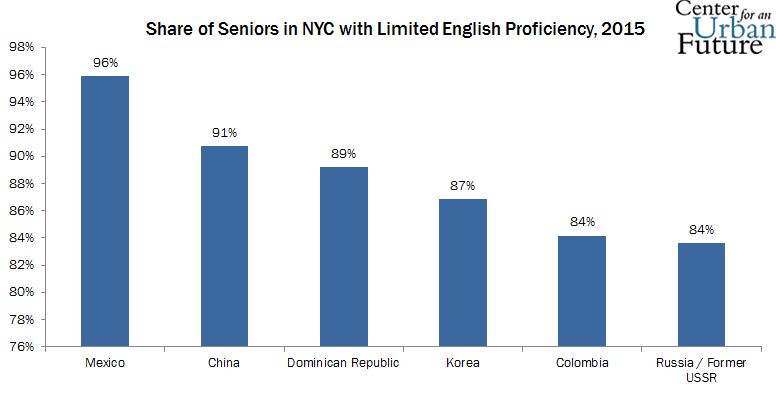A report released by the Center for an Urban Future found that the number of immigrant seniors has seen a large increase compared to the number of native-born seniors in Queens during a five-year period.
The report, titled “The Aging Apple: Older Immigrants A Rising Share of New York’s Seniors,” was released on May 18 and found that the number of immigrant seniors in the borough from 2010 through 2015 increased by 23 percent, while the number of native-born seniors increased by 1 percent.
For the first time since the end of World War II, the share of older New Yorkers who were born outside of the U.S. reached 49.5 percent, which is nearly equal to the native-born share.
Seniors from China account for the largest increase citywide, especially in Sunnyside and Flushing. The average senior from China came to the United States at 46 years old, and approximately 27 percent of seniors from China live in poverty.
Sunnyside and Woodside experienced the largest citywide increase in immigrant senior population during the five-year period. The senior immigrant population in those neighborhoods increased by 80 percent, while the overall immigrant population increased by 55 percent. The native-born senior population increased by 8 percent.
Immigrants also make up more than half of seniors in 10 of 14 Queens neighborhoods. By 2020, the majority of New York City’s seniors will be immigrants. There are also more people over the age of 65 in the city than there are children ages 10 and younger.
Immigrant seniors also experience more poverty than native-born seniors, the study found. An immigrant senior’s median income is $10,800, while a native born senior’s median income is $20,800. This discrepancy is partly due to a higher number of native-born seniors (33 percent) receiving social security benefits than their immigrant counterparts (17 percent).
Immigrant seniors from Russia and the former Soviet Union experience the highest rate of poverty (42 percent), while seniors form Italy experience the lowest rate (6 percent).

Not surprisingly, immigrant seniors struggle with English proficiency. The percentage of older immigrants who speak English less than very well declined slightly from 60 percent in 2010 to 59 percent in 2015.

The Center for an Urban Future also points out that the city needs to do more to care for a growing senior population.
New York City’s Department for the Aging (DFTA) budget for fiscal year 2017 is $330 million, an increase of 25 percent since Mayor de Blasio took office. But these increases bring DFTA’s budget back to 2008 levels.
The agency’s budget is up only 5 percent since 2008, while the senior population increased 9 percent during that time.
The report shows that “serving a diverse and growing older population will require more resources and greater attention to the needs of the city’s cultural and linguistic communities.”
To view the full report, visit the Center for an Urban Future website.



































